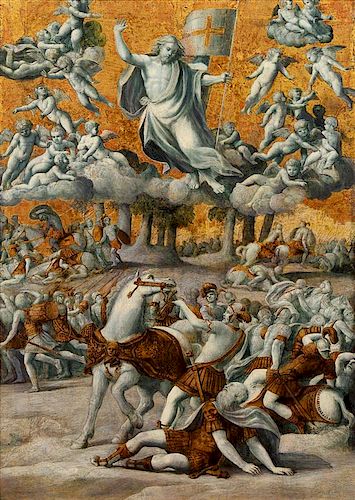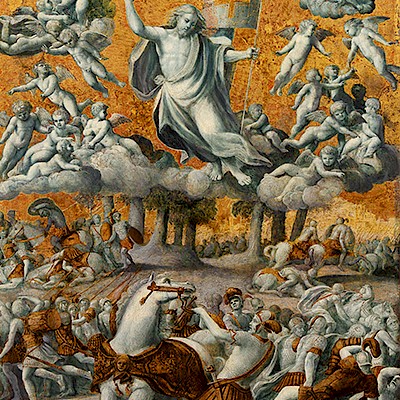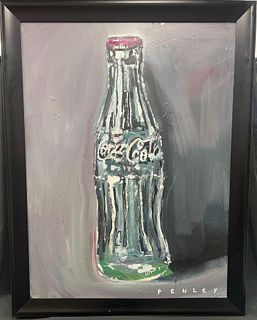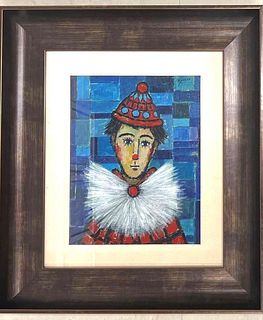* Circle of Raphael, (16th Century), The Conversion of Saint Paul, c. 1520
Lot 18
About Seller
Hindman
1338 West Lake Street
Chicago, IL 60607
United States
Recognized as the Midwest's leading fine art auctioneers, Hindman Auctioneers has built a worldwide reputation based on a full service approach to the auction business tailored to meet the individual needs of our clients. Coming from a variety of educational backgrounds, specialists bring years of e...Read more
Estimate:
$120,000 - $180,000
Absentee vs Live bid
Two ways to bid:
- Leave a max absentee bid and the platform will bid on your behalf up to your maximum bid during the live auction.
- Bid live during the auction and your bids will be submitted real-time to the auctioneer.
Bid Increments
| Price | Bid Increment |
|---|---|
| $0 | $25 |
| $500 | $50 |
| $1,000 | $100 |
| $2,000 | $250 |
| $5,000 | $500 |
| $10,000 | $1,000 |
| $20,000 | $2,500 |
| $50,000 | $5,000 |
| $100,000 | $10,000 |
About Auction
By Hindman
Oct 30, 2018
Set Reminder
2018-10-30 11:00:00
2018-10-30 11:00:00
America/New_York
Bidsquare
Bidsquare : Worldly Pursuits: The Estate of Steve & Peggy Fossett
https://www.bidsquare.com/auctions/hindman-auctions/worldly-pursuits-the-estate-of-steve-peggy-fossett-3506
Hindman Bidsquare@hindmanauctions.com
Hindman Bidsquare@hindmanauctions.com
- Lot Description
* Circle of Raphael
(16th Century)
The Conversion of Saint Paul, c. 1520
oil and gold ground panel, trimmed and transferred to canvas
33 3/4 x 23 3/4 inches.
Estimate $120,000-180,000
Provenance:
Sir Rupert B. Howorth; Christie's London, November 23, 1962 (sold as: "Attributed to Baldassare Peruzzi")
Halsborough Gallery, London
Giancarlo Uzielli, New York
Anonymous sale; Sotheby's New York, Old Master Paintings, June 4, 1987, Lot 19 (sold as: "Girolamo di Tommaso da Treviso, The Younger")
Literature:
Halsborough Gallery, Exhibition of Fine Paintings and Drawings of Five Centuries, May 8-June 21, 1963, illustrated catalogue. Painting listed as panel 36 1/2" x 24 1/2" (92.7 cm x 62.2 cm). Painting attributed to Baldassare Peruzzi, c. 1530-40.
The Burlington Magazine, vol. 105, no. 723, June 1963. Painting attributed to Baldassare Peruzzi, c. 1530-40.
Fondazione Federico Zeri, University of Bologna, Photo Archive. Painting attributed to Baldassare Peruzzi.
Pierluigi Leone De Castris, Polidoro da Caravaggio: L'Opera Completa, Naples, 2001, n. 6. Painting attributed to Girolamo da Treviso.
Paolo Ervas, Girolamo da Treviso, Saonara, 2014, pp. 183-184.
Given its original wood panel support, this impressive work may have been conceived as part of the decoration of a church sacristy cabinet. In it Christ addresses St. Paul from a golden sky populated with dozens of cherubs. Unusually, Paul does not raise an arm to block the light that the Bible says led to his temporary blindness and conversion. Instead, the saint looks directly and yearningly up at Christ. Steadying himself on both arms, Paul emphasizes his total devotion to Christ and the Church, a powerful retort to the doubts and questions about Catholic saints and church authority being raised by Protestant reformers at the time the painting was produced. The work's grisaille technique, masterfully imitating gilt marble or stucco relief sculpture, became popular in the early sixteenth century with the discovery of ancient examples in the Golden House of Nero. Particularly striking are the luminous effects, including landscape details and lances evocatively etched into the gold background. This artist was an extremely accomplished and talented follower of Raphael whose specific identification is worthy of further study. His graceful and fluid manner is related to but distinct from other Raphael followers such as Baldassare Peruzzi and Girolamo da Treviso, to whom the work has previously been attributed. Raphael's Transfiguration (c. 1520) inspired the painting's clear, high drama, meticulous draftsmanship, and bold division of the composition into heavenly and earthly zones, while the idea of Paul's troops fleeing in terror came from Raphael's Sistine Chapel tapestry of the Conversion of Paul and from his designs for battle scenes in the papal apartments.
(Professor Gary M. Radke) - Shipping Info
-
Please refer to https://www.lesliehindman.com/shipping-packing/
-
- Buyer's Premium



 EUR
EUR CAD
CAD AUD
AUD GBP
GBP MXN
MXN HKD
HKD CNY
CNY MYR
MYR SEK
SEK SGD
SGD CHF
CHF THB
THB











